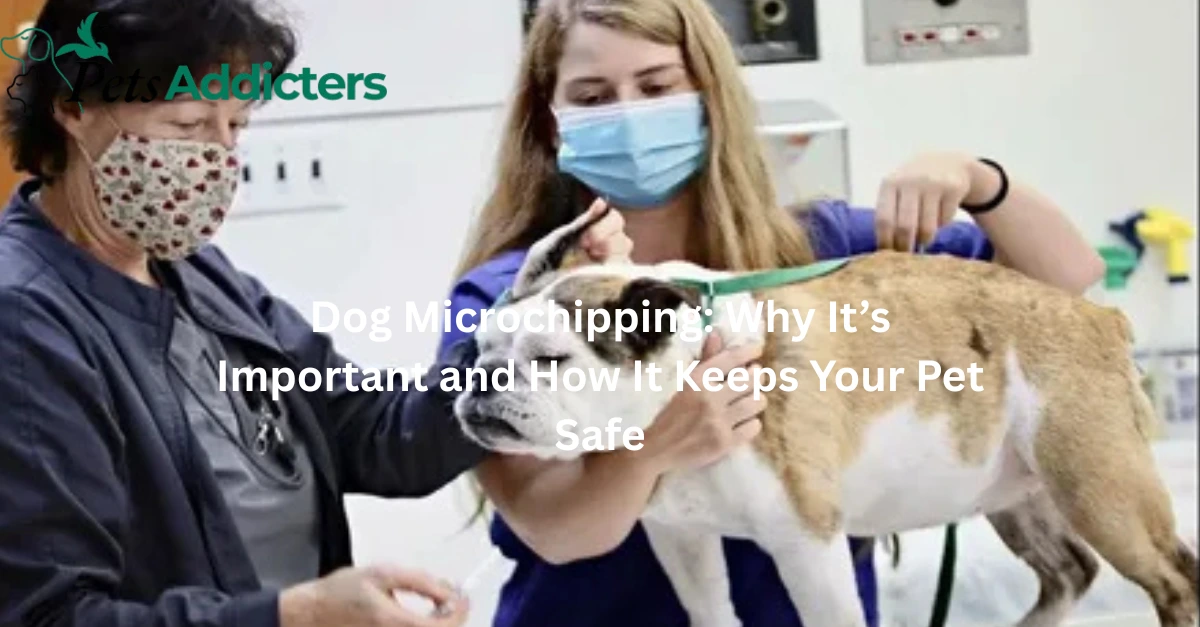You know that mini heart attack you get when your dog slips out of the gate or bolts after a squirrel? Yeah, I’ve been there. That’s exactly why I got my dog microchipped and honestly, it’s one of the smartest things I’ve ever done.
So, let’s chat about dog microchipping what it is, how it works, and why it’s something every dog parent should seriously consider. Don’t worry, I’ll keep it simple.
What Is Dog Microchipping Anyway?
Alright, imagine this: your dog has a permanent ID tag that never falls off, never fades, and can’t be removed. That’s pretty much what a microchip is.
It’s a tiny device out the size of a grain of rice that a vet injects just under your dog’s skin, usually between the shoulder blades. It’s quick, doesn’t require anesthesia, and most dogs barely flinch.
When scanned, the chip shows a unique ID number linked to your contact info in a national database. So if your dog ever gets lost, any shelter or vet can scan them and call you right away.
Cool, right?
Why Is Microchipping So Important
Here’s what I think no matter how careful you are, dogs can surprise you. Gates open, leashes snap, fireworks go off and boom, they’re gone.
A microchip makes sure that even if your dog loses their collar or tag, there’s still a way to bring them home.
In fact, studies show that microchipped dogs are twice as likely to be reunited with their owners compared to those without one.
It’s like a little insurance policy for peace of mind.
Does It Hurt My Dog?
You won’t believe this, but microchipping hurts less than a vaccine shot. Most dogs don’t even react. It’s done in seconds no surgery, no recovery time.
And the best part? The chip stays in for life. You never have to replace it or recharge it.
How to Register Your Dog’s Microchip
Getting the chip is just step one. You’ve got to register it online with your current contact info name, address, phone number, all that good stuff.
Think of it like setting up your phone after you buy it. The device is useless until your info’s on it.
And here’s a tip: if you ever move or change your number, update your info right away. So many lost dogs stay in shelters because their owner’s phone number was outdated.
Can I Track My Dog with a Microchip?
This is a big one. Nope — microchips don’t have GPS. I know, I know, it’d be amazing if they did. But microchips are more like ID tags inside your dog. They help someone identify your pet, not track them in real time.
If you want to track your dog’s location, pair the chip with a GPS collar. That way, you’ve got full protection.
Is Microchipping Expensive?
Not at all. Most vets charge between $25–$60, and it’s a one-time thing. Think about it that’s cheaper than a new leash or a bag of premium food.
For what it gives you safety, peace of mind, and a higher chance of getting your best friend back — it’s worth every penny.
Are There Any Risks?
Honestly? Risks are super rare. Some dogs get a little soreness at the injection site for a day or two, but that’s it. The chips are made from biocompatible material, so your dog’s body won’t react badly to them.
It’s been done millions of times, and it’s considered completely safe.
Final Thoughts
So, here’s my take if your dog isn’t microchipped yet, do it soon. It’s fast, affordable, and could literally save your dog’s life someday.
You never plan for your pet to go missing, but accidents happen. And when they do, you’ll be so grateful that tiny chip is there.
What do you think would you get your dog microchipped? Or if you already have, how was your experience?

